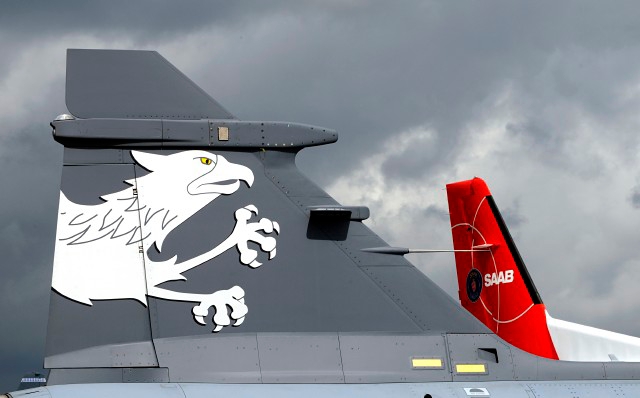
SHAH ALAM: Gripen E for Malaysia. Back in October, the Defence Minister seemed to confirm that the MRCA selection was down to either the Typhoon or Rafale. However, due to the economic uncertainties, the decision for the MRCA was likely to be made by 2020.
At the same function, he also said the other candidates – the Super Hornet and Gripen (and also strangely, Sukhoi) were not being considered for the MRCA project. However since the green light for the MRCA is three years away (which include a general election which must be called by 2018), we can be sure that marketing for all of the fighters named will continue.
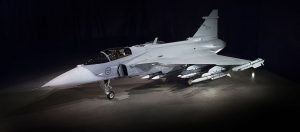
“By the year 2020 we have to make a decision on the [purchase of the] MRCAs. It’s an open secret that we are looking at either the [Dassault] Rafale, or the [BAE Systems’] Typhoon from the UK, but we don’t have to make the decision now. What we need to do is look at the affordability, and that depends on [the state of] our economy,” he said
Hishammuddin also explained in the same press conference why Typhoon and Rafale were the final candidates.
“There are other reasons why we did not look at the [latest] Sukhois, [Boeing F/A-18] Hornets and the Gripen, which is a Swedish plane, but the most important [factor] is that whatever we do, we must be able to explain to the public,” Hishammuddin said.
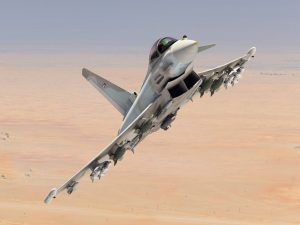
However, as funding for the programm remained hazy, the marketing for the MRCA will be a much smaller much like the stealth campaign ran during the 2005 to 2010 period. So whats this got to do with the Gripen E then? For more on Gripen E go here.
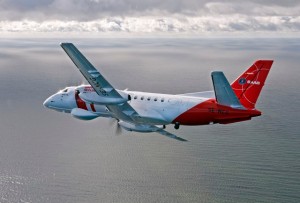
As you might be aware Saab had offered the C/D model together with the AEW package for the MRCA programme. They offered the C/D models as the E was not yet available. Now, with the MRCA programme pushed back to 2020, Saab’s offer now involved 18 of the E/F models. The new offer was made late last year to the Defence Ministry, industry sources told Malaysian Defence.
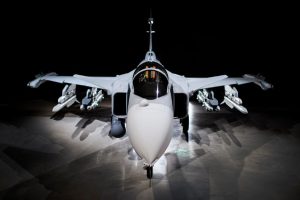
If selected, I am told, deliveries will take place after Sweden and Brazil, the two countries which had already signed the contract for the aircraft. During the launch of the E, it was reported that both countries will receive their first aircraft in 2019 so if we buy them it is possible for us to get our first by early 2021 (depending on various other circumstances of course).
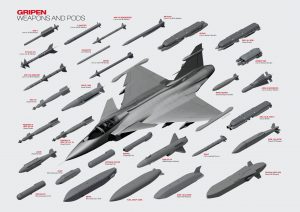
As Saab is pursuing other opportunities, there is also the possibility that the delivery could be made beyond that. So why is Saab still pursuing the MRCA deal even though it is obvious that RMAF wants something else? Because, Saab thinks the Gripen is the most affordable for us – even in better times.
For example, Brazil is paying US$4.68 billion for 36 Gripen Es. The cost for 18 Es will be around US$2 billion, much cheaper than the other two engine alternatives. Furthermore, there is no need for RMAF to buy new weapons for these aircraft (just like Typhoon and Super Hornets) as the missiles, rockets and bombs in its inventory are already cleared and operational on the Gripen (it will be cleared for the E as well).
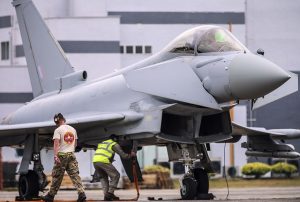
Acknowledging, the economic circumstances, the E offer does not include the AEW or even the MSA aircraft. Saab will likely offer them in a separate deal. In the meantime, Saab’s offer to lease C/D models to RMAF pending deliveries of the E, is still valid.
— Malaysian Defence
If you like this post, buy me an espresso. Paypal Payment

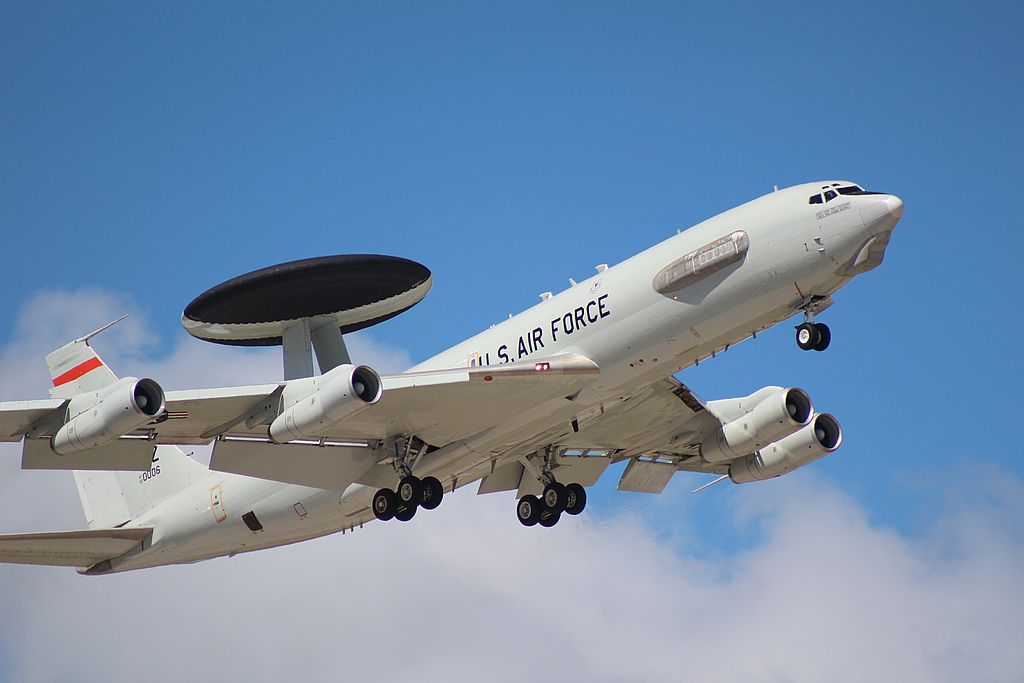
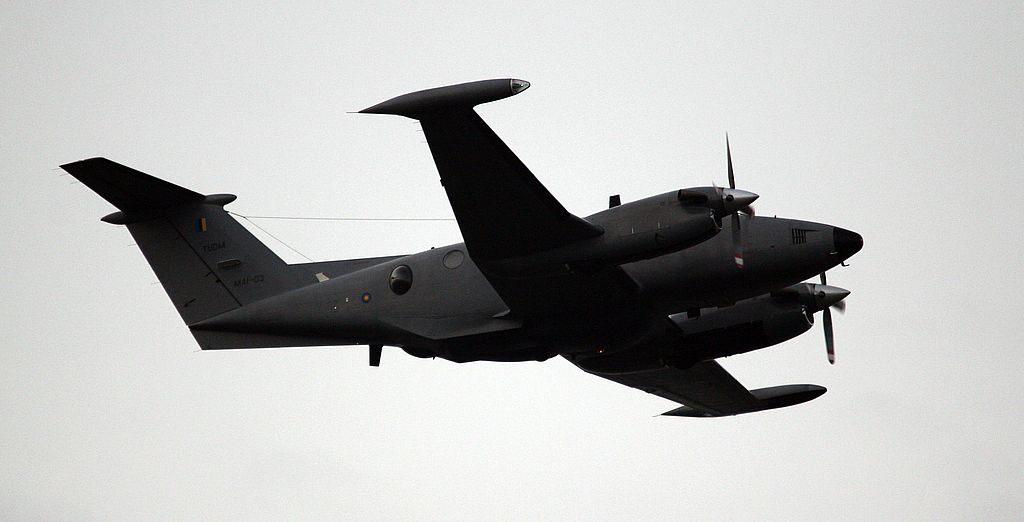
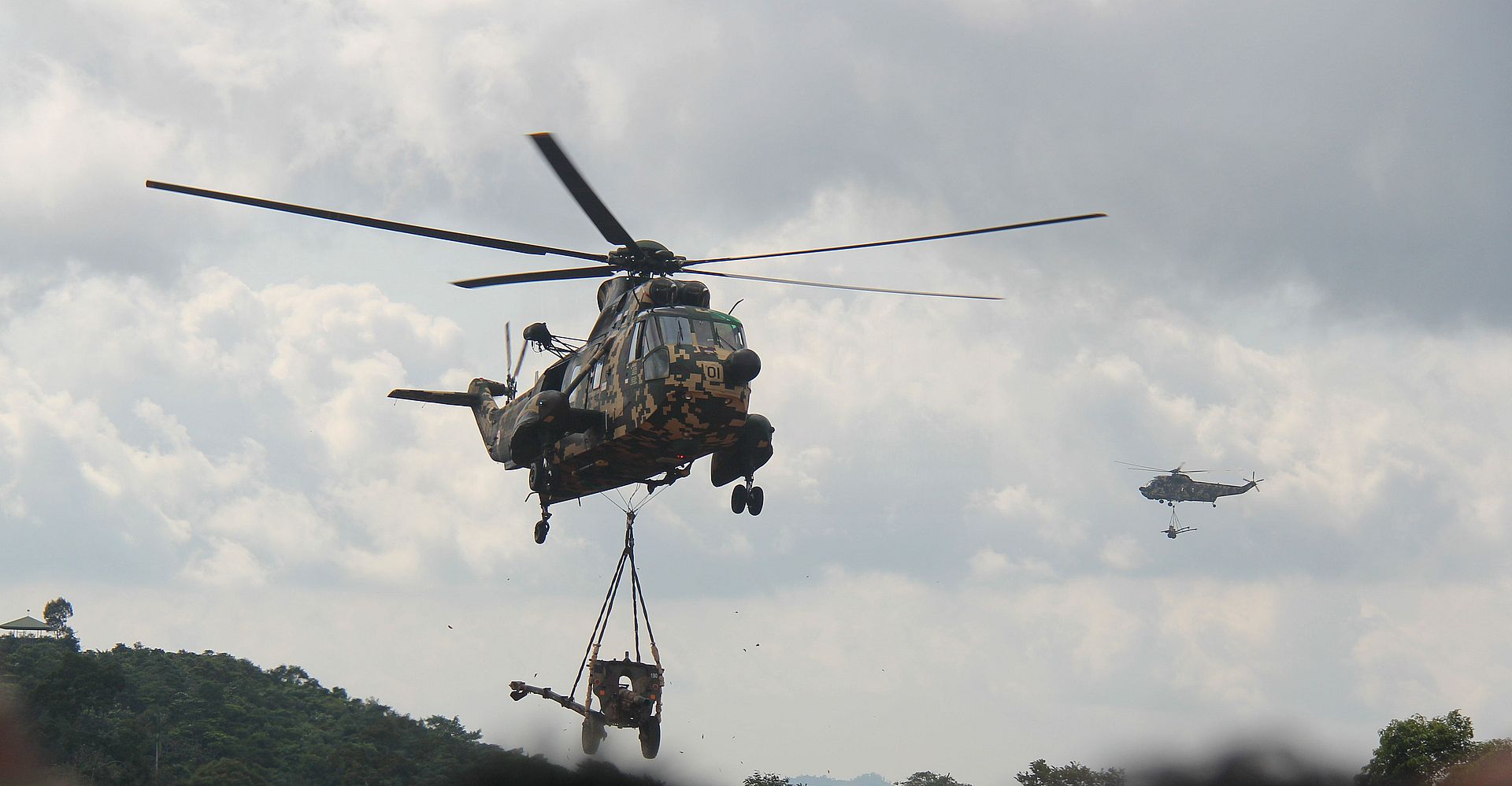
It is to be expected that Saab [with its local partner] will continue to market Gripen right down to the last minute. It would be surprised if it didn’t; given the level of competition there is and tight budgets.
On paper the Gripen is cheaper to buy and operate; and when operating as part of an integrated network, there is little it can’t do [especially in our context] that the more expensive Typhoon and Rafale can. Personally, I doubt the Gripen [despite its plus points] will get selected; for various reasons.
Something to consider [as all big ticket orders are heavily driven by politics] is our diplomatic and trade ties with France and Britain as compared to Sweden and the level of offsets and ToTs [to be paid by the Malaysian tax payer of course] BAE Systems and Dassault can offer compared to Saab.
Gripen E vs Typhoon T3?
Reply
Yes
how long do our hornets have before its going to be retired? 10 years?
Reply
It depends, if we stop maintenance completely by tomorrow, probably by the end of March. If we continue the maintenance work and periodically upgrade them probably past 2030.
Wise decision if it goes to the latest Gripen. Can even consider more than just a mere 18 planes too
In case of economy gets better,will the number of jets to be purchased still 18?
Reply
The MRCA requirement is 18, whether there will be a follow-up buy is beyond me.
Historically, the only follow on orders we have ever made for fighters were F-5Es. Even then, it was as attrition replacements. Follow orders for F-5Es in the 1982/83 period were cancelled as were follow orders for Hornets in the 1998/99 period.
As it stands, the Gripen has next to no chance of being selected but Saab will still market it nonetheless. At one point – a few years ago – there was some interest and political backing but it’s BAE Systems and Dassault that now enjoy that advantage. For the RMAF, focus will be on getting an initial 18; priority will then shift towards getting an AEW. Once it has its MRCAs it can make a strong case, to the pen pushers at the Treasury and Economic Planning Unit, that without an AEW it can’t use the MRCAs to its maximum potential.
Off topic but 2 weeks ago photos were released of Turk Leo 2s knocked out by IS. What’s interesting is that on one tank, the turret had blown off and on the other, the barrel of the main gun had separated from the vehicle. Probably the work of massive IEDs but then I could be mistaken. Granted, the Turk Leo 2s were not 2A6s but if anything it reinforces the point that no tank – despite how heavily protected – is invulnerable.
Thailand just received their EC 725. It has RWR, as do the French ones, and Singapore’s when they get theirs a few years from now.
Reply
As usual we opt for the fitted for but not paid yet
As there is no immediate major* conflict with any regional powers, be it China or other Asean countries, i do not foresee the MRCA will be given a priorityby the EPU now till 2020 earliest. Unfortunately the existing 18 SU30, 8F18D and 13 Hawk 200 (assuming the 10 MIG 29 already retired) may continue to serve past 2025. I personally feared that another selection process would only be done post 2020, with the potential platform that would be selected shall be a replacement to all the 3 current platforms by 2025 and beyond
Reply
Personally, I think with our budget RMAF should only operate one fast jet type
Hopefully by the mid 2000’s the RMAF will only be operating 1 fighter type. The fact that we have such a hodgepodge of fighter types now is wholly thanks to one man, who placed national interest before commonality and logic. Selection was based not on price or practicality but on how it would improve bilateral relations and benefit the local industry. It remains to be seen if the RMAF has any future interest in maintaining a high/low end mix. Personally I still see a need for single engine type which is more practical to use for the various secondary ops that don’t require the likes of a Typhoon/Rafale/MKM/Hornet.
On the Gripen. Whether or not RTAF Gripens make an appearance this year at LIMA [in the past sponsored by Saab] is an indication of how Saab rates its chances of securing a future contract.
Well I believe one type can handle all of our more demanding mission sets. But it could save us money to operate a lighter type for CAS and peacetime air sovereignty missions.
If the Hawks have a long life left, they can contribute a lot with an affordable upgrade. The reality is we will never have enough MRCA, it makes sense to make them last by having cheaper airframes to shoulder the load.
Noting of course that getting the Hawks upgraded first will be an excuse to deny the MRCA.
AM,
Agreed. If we look at things objectively we don’t need MKMs or Hornets based at Labuan on a permanent basis; especially when we have Hawks that can do the job. Looking at the threat environment and our current relations with our neighbours; there is no immediate threat that Hawks can’t deal with. It’s not as if PLAAF J-11s or TNI-AU F-16s are intruding into East Malaysian airspace. If indeed something serious happens overnight, MKMs and Hornets can be flown to Labuan.
Taking Lahad Dato into consideration, on paper Hornets were not required. The sorties were carried out in daylight, against targets that were not mobile or time sensitive; I fail to see why the Hawks couldn’t have performed the taskings by themselves. One can make an argument that Paveways were used and the Hawks can’t lase targets by themselves. For which I would counter by saying were Paveways really needed? Wouldn’t dumb bombs and CRV-7s have done the job just as well without the use of Paveways?
The Hawks have lots of hours left on their air frames and BAE Systems and Roll Royce will be providing support for a long time more. The question is really how much a customer is willing to spend on upgrades. The issue of having a single engine, lightweight that can do certain roles cheaper than a twin engine fighter also applies to the C-130s and A400M. Given that there will be many occasions where the load to be ferried does not require the space a C-130 or A400M provides; does the RMAF have a need for additional light transports in the form of CN-235s or CN-295s?
I have no details on how close our lines were to the intruder at Lahad Datu, but perhaps we used PGMs because we wanted a margin of safety.
Last time I suggested a PGM upgrade to maximise the Hawks as CAS platforms, we came to the question of the Treasury blocking the MRCA. I believe the cabinet will prevail over the Treasury if it has made up its mind on an acquisition. If the cabinet is not advancing a preferred MRCA now, does this mean the RMAF has more input in the selection this time?
Reply
No, it will still be a political decision
The way i see it, if we go with 1 common platform by mid 2020s, I believe we may need more than 18. Currently Fighter/Attack combo numbered at 39, excluding the 10 retired MIGs. Assuming 1 to 1 replacement needed, the number to be acquired can be between 39 to 49. say average going away price at USD150 mil, we are looking an investment of atleast USD5.9 billion.
IMHO, then Typhoon would be in a slight advantage..It can offer ex-RAF Tranche 1 as temporary solution at a cheaper price say USD50 mil each while over a period of say 10 years Malaysia would switch to the latest variant of Typhoon. I dont think Dassault can offer the same for Rafale..
Reply
Kamal, as I had written before the Typhoon lease offer is that we pay for the maintenance and support for the Tranche 1s we used while waiting for the delivery of the brand new ones. If we want to keep them after getting the new ones only then we have to negotiate the price. If we buy new Typhoons they will also upgrade the Hawk fleet FOC
AM,
When the Model 56s were firing, troops were 1km away. Given that troops were quite a distance away, using dumb bombs and rockets [which were used together with Paveway] would also have provided a margin of safety.
On paper, the Hawks should receive a AESA [at present though no AESA has been integrated on the 200s]; glass cockpit, a HMS and Sidewinder X; etc but maybe it’s felt that the cash can be better used elsewhere and that all that should be spent is the minimum to keep them flying for the next decade and to only replace obsolescent stuff like the RWR.
Kamal,
Of course we need more than 18. For QRA, 2 are always on alert and if those 2 take off, by right another 2 will take their place so that we always have 2 on QRA. On top of that ‘x’ number will be unserviceable or will be undergoing maintenance and others might be used for training sorties. There is added strain when we have to allocate fighters for exercises. With only 18; it’s barely enough for peacetime duties or low intensity stuff that don’t require us to generate high number of sorties in a short time [like Lahad Dato] but not more.
Even the RAF, with the number of Typhoons it has, can barely meet home commitments whilst also having Typhoons on detachment to the Middle East and other places. I suspect that together with the existing MKMs and Hornets; the RMAF feels that with 18 new MRCAs it can – just barely – get by with the numbers, allowing it to then shift priority towards an AEW.
P.S.
If Typhoon is selected do we go for the Meteor or stick to AMRAAM? MBDA will press us to go with Meteor. No doubt, Meteor looks very promising but do we want to be in the position of having 3 BVR AAMS [R-77, AMRAAM and Meteor]? And will we spend the millions needed on a full fledged flight and combat simulator or will we ”rent” simulator hours from others? We’ve done so in the past with IPTN’s CN-235 simulator at Bandung and Norwegian C-130 simulators but looking at our history we’ve bought simulators for all the fighters we’ve bought since the 1990’s [Fulcrums, Hawks, Hornets and MKMs].
Against the Rafale, the Typhoon is the better choice from a performance and weapons commonality view. It is supposedly also cheaper to operate.
That said, the Tranche 1s have very little commonality with later Tranches. They are not upgradeable, and even as interim platforms are potentially very expensive to operate as the numbers in service and the available support are limited.
The UK originally intended to keep the Tranche 1s in service as interceptors but has already begun to scrap them early.
In that case, I have no idea why dumb bombs were not used at Lahad Datu. What’s for sure is in even a medium intensity conflict our assets will be stretched and give us little choice but to use dumb bombs extensively fo CAS. This is costly in munitions expended and more importantly in the exposure of aircraft to enemy fire.
Or PGM platforms also happen to be our higher performance assets and will have their hands full with counter air, land and maritime strike and other missions.
A pity we can’t have more PGMs as they are smaller and cheaper nowadays.
AM – ”and will have their hands full with counter air, land and maritime strike and other missions.”
Which is a major problem. As other air arms have long discovered maintaining proficiency in so many roles is problematic. When one has to train for so many roles being good at either one can be hard.
An argument can be made that priority should be in counter air operations because without control of one’s airspace; how will one
perform maritime strike, interdiction, deep penetration, CAS, SEAD, etc?
A RTA gripen just crash during airshow…
A sad news.
A Thai gripen c fighter has crashed on Saturday 14/1/17 in hatyai (100km from Malaysian border) during children’s day airshow.
A video clearly shows the plane entering into a steep dive. The pilot was unable or didn’t attempt to pull out from the dive. It’s fortunate that there were no casualties on the ground.
My opinion differs-the atm strength lies with its land n naval forces….instead of wasting valuable resources on the so call handfull MRCA,its best to expand the floating assets and equipped the land forces with ground to air offensives money can buy….coastal missiles if possible….there are so many options n possibilities to make the MAF great n its not necessarily by having 18 most up to date fast jets.
My take regarding the lahad datuh incident…if only the land forces is equipped with mini man portable rafale missile that would be great..this missile is launched by a 2 men team…it is launched via tube like a motar projectile while in the air loitering the seeker head will be looking out for targets…it confirms the target it will go for a kill mode….ah but alas MAF is not buying made in isreal product.
To bad the chain of command up above prefer to use old method with lots of wastefull man power n resources.
Unimaginative in the art of war….just imagine those rag tag bandits can easily be killed with few tubes n with good intel of their whereabout….my 2 cents ahhh
I am however in differing view, I would rather have a strong airforce that are in sufficient quantity (maybe 64 to 72 fighter jets, 2 AEWC and maybe 6 long range MPA/Sub hunter/killer and allow the naval force only to perform more of constabulary duty, anti mine operation, logistic and limited anti submarine detection/warfare.
Reason being, since the last great sea battle in WW2, majority of sea conflict are dealt with using air assets rather than ship to ship battle. Just my 2 cents though
I think political/foreign relations, apart from the AF wishlist & budgetary issues, is going to influence the MRCA. Almost all recent MAF major purchase is from France, Russia and lately China, the old English “master” might be expecting his long overdue “protection money”… which might be pressuring for the selection of Typhoon, undeniably the most expensive and least affordable candidate to buy and operate. Personally, I prefer the Gripen as I do not want to see the nation put under more financial stress, RMAF preference aside, all Malaysians well-being should always be prioritized.
My personal RMAF vision2022 plan
3000 mil budget
600 mil 4x Bombardier Global 6000 Erieye AEWC, 2x Global 6000 VIP
100 mil 6x Eurocopter EC225LP 2nd hand (4x SAR, 2x OGP; CHC mass helicopter sale 2017)
220 mil 8x Challenger 605 MPA, 1x Challenger 605 utility
1400 mil 16x TA-50M
28x FA-50M
100 mil 8x F/A-18D ex Kuwait
0 mil 6x F/A-18B ex Australia
300 mil 6x SU-30MKM ex India (nearly brand new)
25 mil 12x PC-7MkII ex South Africa
30 mil 35x PC-9M ex Saudi (for fighter squadron companion trainer program to save fighter flight hours)
80 mil 8x PC-24
15 mil 1x C-130H airod (short body for special forces flying support)
130mil SU-30MKM minor upgrade program
******************************
Minus sell
100 mil 18x hawk 108/208 – use proceeds for F/A-18D upgrade program
120 mil 3x C-130H-30 – use proceeds for C-130 upgrade program
25 mil 7x MB-339CM – use proceeds for F/A-18D upgrade program
50 mil 12x MiG-29N – use proceeds for F/A-18D upgrade program
10 mil 1x Global Express
******************************
Would give 2022 a total fighter capability of:
Hi end (1 squadron – gong kedak)
24x SU-30MKM (12 operational pool, 2 standby, 6 service pool, 4 labuan QRA rotation)
Mid (1 squadron – Butterworth)
16x F/A-18D (12 operational pool, 4 stanby/service pool)
6x F/A-18B (3 operational/training pool, 3 stanby/service pool)
low (2 squadron – Kuantan and Labuan, 1 Lead In Fighter Training – Kuantan)
16x TA-50M (12 operational pool, 4 standby/service pool)
28x FA-50M (24 operational pool, 4 standby/service pool)
What is needed is a balanced force. No one single force can say they are best. Each has a role in warfare. Both infantry n navy ships apart from winning the battle, are required to dominate the ground or sea. Of course ships and infantry can be attack by air but each time the planes need to return to base. Only men and ships can remain in an area for an indefinite time. So ships and men are important. Of course control of the air allows both protection and also extend the attack capabilities of the other two services
These orbats and cost figures bear no relation to reality. Operating and personnel costs are completely absent. I don’t think they add anything to our knowledge.
@ AM
BTW does the TUDM MRCA buy gives out any info of the operating or personnel costs; or does it has any relations to the reality of TUDM current operational needs?
To explain all what that my 2022 idea means (with all the oprating and personel costs consideration, which i tried to explain a bit, with the explaination of the companion trainer idea, the final overall fighter mix etc etc) it would need an essay with something longer than the normal defence white paper releases. As a summary, that is my idea of what the near future NEW acquisitions that could add more capability to the air force within a limited budget.
It is easy to condemn, but not easy to really spend time to really think about ideas that you could contribute.
Hmm…
Seems like saab is still marketing new build gripen c/d, latest to slovakia and bulgaria. For bulgaria it is said that saab is willing to match the gripen c/d price to refurbished used f-16s. If that is the case, saab is actually offering the gripen c/d at fa-50 prices! Will still need to wait for official costs of the bulgarian gripen sale.
What does this mean for malaysia. If saab can give us the used f-16 price match offer, we could actually buy 2 squadrons of new build gripen c/d (36 aircraft) for less than 1/2 the cost of 18 typhoon or rafale.
After looking for more clues, seems that the bulgarian 8 gripen c/d buy would cost around usd836 million. No cheap gripen c/d similar price to used f-16 then…
Reply
Indonesian upgraded 24 F16s for $750 million. The aircraft itself was at no cost
” ” On 26 April, the government announced that a selection board had reviewed the three submitted offers, received in mid-March. These were for used Tranche 1-standard Eurofighter Typhoons from Italy, modernised Lockheed Martin F-16s from the USA and Portugal, and new-build Gripens. Bulgaria had asked for the deal to be conducted under a government-to-government agreement.
Defence minister Stephan Yanev says Sweden’s Gripen proposal has been ranked first, followed by the F-16 bid and finally the Typhoon offer, but provides no further details.
Sources in Sofia indicate that the Swedish offer was preferred because its approximately €511 million ($558 million) price tag was less than the F-16 bid, which was valued at around €767 million. The Gripen bid also proposed the delivery of first aircraft within 18 months, supported by a deferred payment scheme to relieve the financial burden on Bulgaria’s defence budget. ” ”
usd558 million for 8 new Gripen C/D. That is about usd70 million per aircraft. That is no used F-16 price (as per the Indonesian deal), and 2x the price of the KAI FA-50 Golden Eagle.
Reply
The Vipers are ex Portugese air force and not US ones.